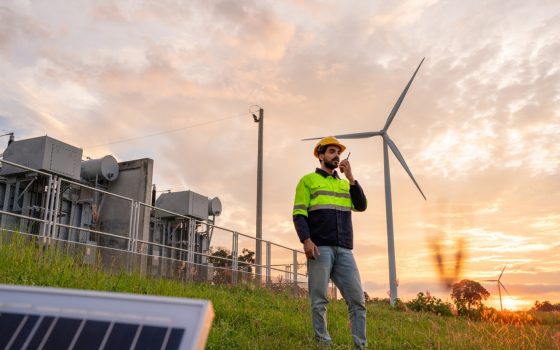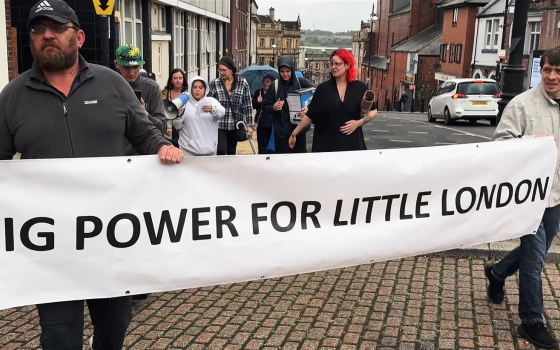Installing emergency insulation in draughty homes this winter would save families £260 a year, or £6.4bn for all households
Government could install emergency insulation in every draughty home for three quarters of the cost of freezing the energy price cap for 6 months while saving the treasury £3.2bn
05 November 2022
Rolling out emergency insulation this winter in the nation’s draughtiest homes could save families £260 a year, a total household saving of £6.4bn, according to research from the New Economics Foundation (NEF), published today. The analysis finds that the government could roll out an emergency insulation programme – installing basic measures like loft and cavity wall insulation in every available home – for 77% of the amount they are spending to freeze the energy price cap, which would save the treasury £3.2bn.
As energy prices have continued to rise, the new prime minister has frozen the energy price cap at £2,500 for a typical household for the next two years. The report finds that this will cost £35.5bn. But only £330m extra a year has been allocated to upgrading the UK’s leaky, draughty housing. NEF finds that the government could kick-start an emergency insulation programme with £3.6bn, and complete it with £27bn.
The government has set a target for all UK homes to be upgraded to decent energy efficiency levels by 2035, but insulation rates have dropped in the last decade. If insulation rates had kept pace with their 2012 peak, almost all homes would be at Energy Performance Certificate (EPC) C by now. The research finds that, had all homes been upgraded over the last decade, families in England and Wales would be saving £530 a year on their average energy bills. In addition, the government would be saving £3.5bn on freezing the price cap in over 6 months, making the price cap freeze 10% cheaper for England and Wales.
NEF research finds that not only would insulating and upgrading our homes save families and the government money, it would also improve energy security. Ofgem and the national grid have warned that the UK may face gas shortages and blackouts this winter. If all homes had been upgraded to EPC C, today England and Wales could reduce their expensive gas imports by at least 7%. The UK’s annual greenhouse gas emissions would have fallen by the equivalent of the annual carbon footprint of Leeds, Bristol and Bradford combined (9.2 tonnes), the research finds.
68% of homes in the UK – nearly 19m – do not meet decent energy efficiency standards. Government data shows that 5.2m homes have no cavity wall insulation and 7.9m have substandard or no loft insulation. Simple, affordable, and easy-to-install measures like loft and cavity wall insulation, draught proofing, thermostatic radiator valves and smart thermostats have a major impact on energy bills. It would cost £1,158 on average to install these in a typical semi-detached house, which would slash energy bills by £273 over a year annually. Under current energy prices these costs would pay for themselves in savings in just five years. NEF recommend that the government kick-start an emergency insulation programme to subsidise basic, affordable insulation measures in the nation’s draughtiest homes.
Heather Kennedy, senior organiser at the New Economics Foundation, said:
“The government knows that families will be agonising over turning the heating over the next few months. But they’re refusing to consider the simple solution that would keep families warm this winter and in the winters to come: installing basic emergency insulation in our draughtiest homes. Instead of spending money on new temporary support each year, that only lands in the pockets of big energy companies, we could instead invest in making all our homes well-insulated and heated by clean, green energy — whether we rent a flat or own a castle.”
Christian Jaccarini, economist at the Local Economies Unit, New Economics Foundation, said:
“This government should have spent the last decade upgrading our leaky homes. If they had, families would be saving £529 this year alone, and potentially even more next year when the energy price guarantee ends. But it’s not too late – we can keep everyone warm this winter by funding local government to kick-start an emergency insulation programme, focused on simple, affordable, and easy-to-install measures that have the biggest impact on bills.”
Notes
The New Economics Foundation is a charitable think tank. We are wholly independent of political parties and committed to being transparent about how we are funded.
The briefing, An emergency insulation plan to cut bills this winter, will be available at on the New Economics Foundation website.
Case study is available: Amanda is a student nurse with three children, living in High Peak, Yorkshire. She lives in a draughty, leaky home which she struggles to heat.
Table 2: Average investment cost and annual savings across different property types, England Oct 2022 – Sep 2023 (inclusive)
Property type |
Investment cost |
Annual saving |
||
Households |
Government |
|||
Semi-detached house |
£1,158 |
£272 |
£139 |
|
End of terrace house |
£953 |
£202 |
£103 |
|
Flat-maisonette |
£958 |
£199 |
£102 |
|
Detached house |
£1,526 |
£406 |
£207 |
|
Bungalow |
£1,116 |
£246 |
£126 |
|
Mid-terrace house |
£959 |
£216 |
£110 |
|
Source: NEF analysis of Energy Savings Trust data on annual bill savings. Investment costs and annual savings are presented as aggregates of costs and savings from individual measures. We calculate average property-type investment, using data from the English Housing Survey (2019) to account for the fact that not all measures will be appropriate for each home. Both are higher estimates as cost reductions from economies of scale are not factored in and savings, in reality, have diminishing returns after installation of each measure.
To estimate the costs and benefits of our proposed emergency insulation programme, we first identify measures best suited to an emergency intervention, considering cost, installation speed, installation skills required, carbon-cutting potential, and short-term cost-saving potential.
We primarily use figures from the Energy Savings Trust (EST) on costs and savings of individual insulation measures. Many of the assumptions have been updated to account for the national scope of the above analysis and can be made available upon request. For loft and wall insulation we combine existing costs and savings data from the EST with data on current insulation levels from the English Housing Survey 2019 (EHS). The costs and savings associated with upgrading homes with different levels of existing loft insulation is modelled on two point estimates from the EST: the cost and savings for a property with no insulation that is being upgraded to 270mm, and a property with 125mm of insulation being insulated to 270mm.
When estimating savings we consider the four quarters from Q4 2022, to Q3 2023, and update energy savings trust forecasts such that they reflect the forecasted energy prices, as described above. Our analysis breaks down the UK housing stock into six types: semi-detached houses, end of terrace houses, flat-maisonettes, detached houses, bungalows, and mid-terrace houses. We then scale up the household-level to England-wide estimates using England housing stock data.
To model energy consumption, we use data on mean electricity and gas consumption (kWh) by EPC Band, from the National Energy Efficiency Database (NEED). We then seasonally adjust this data for each quarter, using national statistics on energy trends. We estimate the impact of upgrading homes from below EPC C to EPC C, by calculating the seasonally adjusted energy consumption differentials between band C and bands D, E, F, and G.
To estimate the household-level energy cost saving to the government and households we then apply the energy price guarantee rates and estimated quarterly energy prices to the consumption differentials. For Q4 2022, we take the now non-binding energy price cap as the energy price. For later quarters, we estimate energy prices using futures prices for peak electricity, base electricity, and natural gas. The futures prices are as observed on Tuesday 27 September.
To scale up our estimates from the household level to the national level (England and Wales) we use the English Housing Survey and dwelling stock estimates for Wales. We assume Wales has the same distribution of homes across EPC bands, though given the proportion below band C is higher in Wales than in England, we expect that this will mean our figures understate the aggregate savings.
Savings that are made below the Energy Price Guarantee are attributed to households and those above are attributed to the government.
To translate our figures into equalised carbon emissions we use estimated emission factors from BEIS.
Topics Climate change Housing & land






